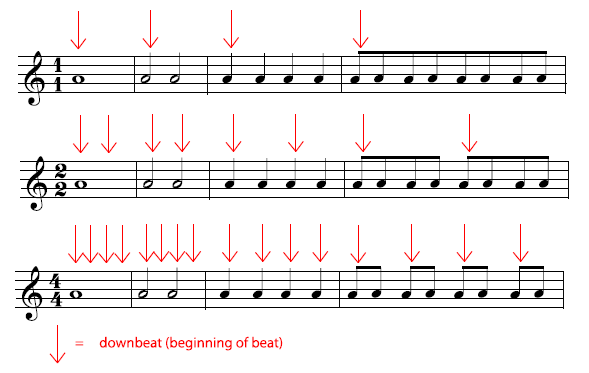You may have already noticed that a measure in four four time looks the same as a measure in two two. After all, in arithmetic, four quarters adds up to the same thing as two halves. For that matter, why not call the time signature "one one" or "eight eight"?

Or why not write two two as two four, giving quarter notes the beat instead of half notes? The music would look very different, but it would sound the same, as long as you made the beats the same speed. The music in each of the staves in below Figure 1.51 would sound like this.

So why is one time signature chosen rather than another? The composer will normally choose a time signature that makes the music easy to read and also easy to count and conduct. Does the music feel like it has four beats in every measure, or does it go by so quickly that you only have time to tap your foot twice in a measure?
A common exception to this is six eight time, and the other time signatures (for example nine eight and twelve eight) commonly used to write compound meters. A piece in six eight might have six beats in every measure, with an eighth note getting a beat. But it is more likely that the conductor will give only two beats per measure, with a dotted quarter (or three eighth notes) getting one beat. Since beats normally get divided into halves and quarters, this is the easiest way for composers to write beats that are divided into thirds. In the same way, three eight may only have one beat per measure; nine eight, three beats per measure; and twelve eight, four beats per measure.

- 3492 reads






